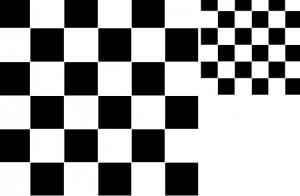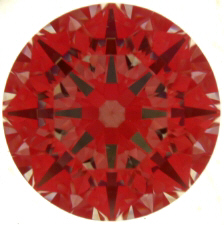As I browse through these threads I occasionally see interest in round brilliant-style diamonds that have many more facets than the 58 found in the round brilliant cut diamond. I''ve seen cuts advertised as having 90, 93, 102, and 129 facets. No doubt there are others.
I''m inclined to think these cuts are being developed as a sort of substitute for the ideal cut. Have you ever noticed how colored stones (the so-called semi-precious gems) are cut to achieve a lot of sparkle? Lots and lots of facets. This is because the stone doesn''t have a high enough index of refraction to achieve high optical performance with a low number of facets. Since this technique works for colored stones, it surely will work for diamonds too.
If high optical performance is to be achieved with a low number of facets, each of those facets must necessarily be precisely aligned with respect to each of the other facets. This is not an easy thing to achieve. It''s costly and time consuming. Indeed, if the alignment of one facet interacts with that of all the other facets, the time to accurately cut such a diamond must rise exponentially with the number of facets. I postulate that cutting a highly facetted diamond in the manner of the ideal cut round brilliant diamond is a practical impossibility. For example, if it takes three to four days to cut an EightStar diamond, it would take months, maybe years, to produce just one ideal cut highly facetted diamond.
I''m forced to conclude that these highly facetted diamonds are using a blunder-buss approach to achieve the illusion of high brilliance. That is, the facets need not be precisely aligned. There are just so many facets that no matter how you look at the gem, there''s a good chance that some facet somewhere is reflecting light. This effect is called scintillation and should not be confused with brilliance. Does anybody have a FireScope image of one of these gems? I suspect it would be a mass of tiny light leaks. Taken individually each light leak would appear small. But summed up they probably represent something significant.
I''m inclined to think these cuts are being developed as a sort of substitute for the ideal cut. Have you ever noticed how colored stones (the so-called semi-precious gems) are cut to achieve a lot of sparkle? Lots and lots of facets. This is because the stone doesn''t have a high enough index of refraction to achieve high optical performance with a low number of facets. Since this technique works for colored stones, it surely will work for diamonds too.
If high optical performance is to be achieved with a low number of facets, each of those facets must necessarily be precisely aligned with respect to each of the other facets. This is not an easy thing to achieve. It''s costly and time consuming. Indeed, if the alignment of one facet interacts with that of all the other facets, the time to accurately cut such a diamond must rise exponentially with the number of facets. I postulate that cutting a highly facetted diamond in the manner of the ideal cut round brilliant diamond is a practical impossibility. For example, if it takes three to four days to cut an EightStar diamond, it would take months, maybe years, to produce just one ideal cut highly facetted diamond.
I''m forced to conclude that these highly facetted diamonds are using a blunder-buss approach to achieve the illusion of high brilliance. That is, the facets need not be precisely aligned. There are just so many facets that no matter how you look at the gem, there''s a good chance that some facet somewhere is reflecting light. This effect is called scintillation and should not be confused with brilliance. Does anybody have a FireScope image of one of these gems? I suspect it would be a mass of tiny light leaks. Taken individually each light leak would appear small. But summed up they probably represent something significant.







300x240.png)